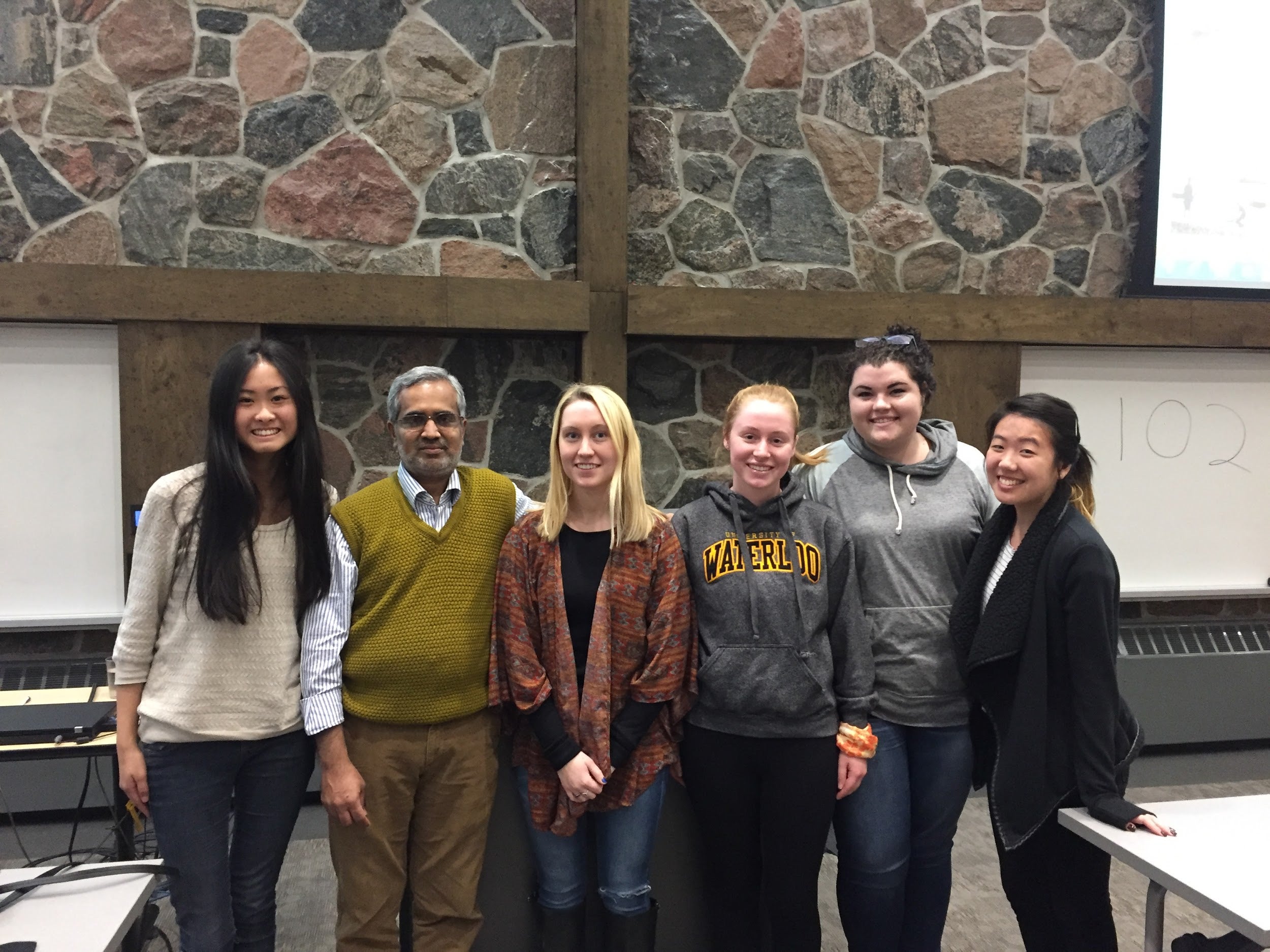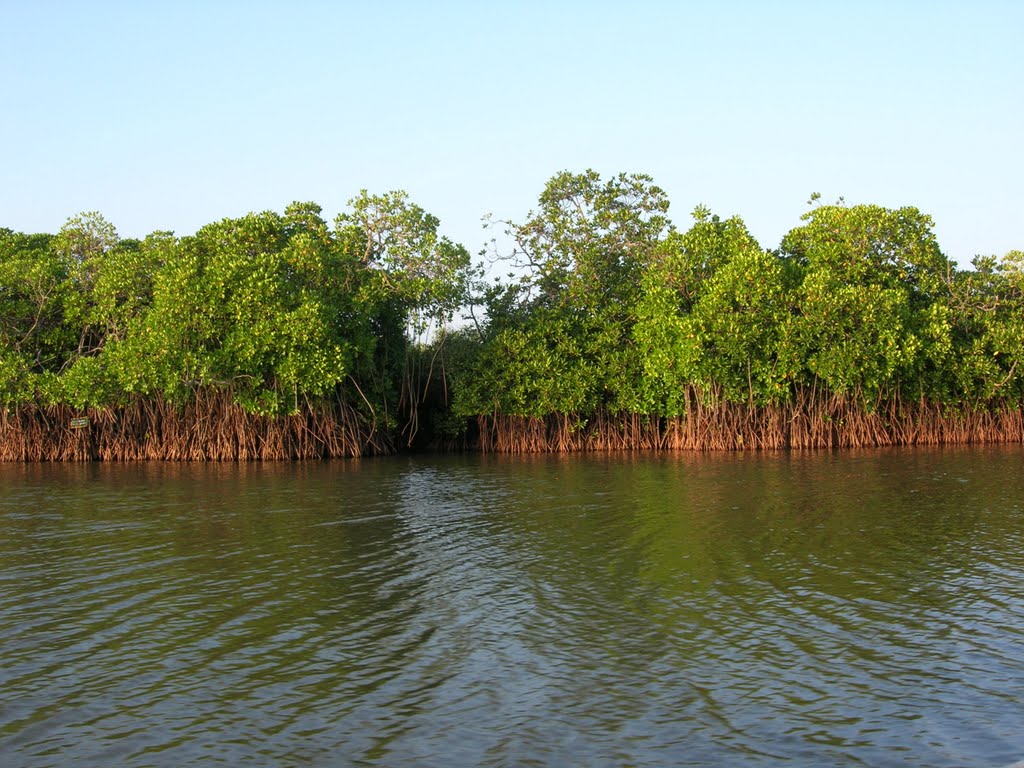
Photo from left to right: Lillian Lu, Dr. Parthasarathy, Emma Toner (photo), Samantha Smith, Nikki Martin, and Cherie Wai
The widespread issue of internal conflict within a nation hinders its capability of becoming more developed. This week, our panel was privileged enough to hear Dr. Parthasarathy, from the Indian Institute of Technology, speak about his research and experience with internal conflict and environmental degradation within the Mumbai Metropolitan Region. In the MMR (Mumbai Metropolitan Region), little effort is put into environmental protection and research. Ironically, the urban population relies heavily on natural resources in their daily lives. 12 million people reside on the coastal lands in the MMR, and conflicts over land and resource access between different groups in the coastal lands and cities has been a major issue.
Dr. Parthasarathy outlined four major problem areas that coastal zones face: vulnerability, weak governance, inequality, and loss of commons. Coastal zones are a very important part of the ecosystem, but are highly vulnerable to a number of anthropogenic and natural factors. The location of Mumbai’s coastal zone makes the area especially susceptible to the effects of climate change and other types of environmental degradation, such as sea levels rising. This has resulted in lots of inundations and ruined the once prospering coastal shores. There have been many negative impacts on India’s mangroves especially, which are crucial to the shoreline ecosystem because they provide them protection.


Weak governance was the second issue brought up as a contributor to coastal land conflict. The Mumbai government and city planning associations consist of different institutions that perform separate functions. This allows for expedited decision-making, but unfortunately there is a lack of communication. With this disconnect many issues remain unaddressed, such as the coastal elements of planning. There are also almost no incentives for companies to abide by the laws, and the few environmental policies that are in place are not being enforced by the government. When the Indian economy is so dependant on its coastal resources, it seems short-sighted to allow such an environmental strain. 
The level of dependency on natural resources is based on factors that cannot be controlled, such as age, sex, and socioeconomic status, and the inequality among these factors is immense. Furthermore, the result of environmental degradation can cause economic disputes between underprivileged citizens; a main source of conflict as proposed by Daniel Katz, an American psychology professor. In this case, each citizen or family competes to attain as many resources as possible, which can be disastrous once resources become scarce, and results in people turning against one another. Encroachment is more common than ever before in the places upon which fishers customarily depended for their livelihoods. Mass migration has been rising among coastal residents and disputes are continuing to break out.

Ultimately, the cause of these issues arose from the lack of recognition of people’s rights of the commons. Commons (derived from Tragedy Of The Common) stands for the idea that natural and cultural resources are accessible to all members of a society and not owned privately. Customary management is naturally established in the coastal cities, where people manage and conserve resources efficiently, as their livelihoods significantly depend on them. In contrast, the state laws allowed the violation of the commons rights of the small-scale fishing communities by multinational fishing companies. Dr. Parthasarathy suggested that it is vital to manage resources at different levels, where strategies and methods need to be customized according to specific situations and needs.
The conflict that is occurring in the MMR in regards to environmental degradation from coastal development is a prime example that conflict comes in many forms, and it is not inherently violent. If well-managed, this conflict has the potential to be a source for meaningful social change and create incentive for the government to properly address the coastal deterioration in the MMR.
References:
"The Biggest Ports of India." Rediff Business. 8 Oct. 2010. Web. 28 Feb. 2016.
"Importance of Mangroves." Florida Museum of Natural History. Web. 28 Feb. 2016.
Kupekar, S., & Kulkarni, B. (2013). Climate Change and Fishermen In and Around Uran. Dist Raigad.(Maharashtra). IOSR Journal Of Environmental Science, Toxicology And Food Technology (IOSR-JESTFT), 4(1), 2319-2399, 52-57. Retrieved from http://www.iosrjournals.org/iosr-jestft/papers/vol4-issue1/G0415257.pdf?id=3741
“Press Information Bureau, Government of India. (2011, October 31). INDIA STATS : Million plus cities in India as per Census 2011. Retrieved from http://pibmumbai.gov.in/scripts/detail.asp?releaseId=E2011IS3”
“Sources of Conflict and Methods of Conflict Resolution.” The American University. Web. 1977.
Photo Credits:
Open Source photo of mangroves in Pichavaram Mangrove Forest, India from http://www.panoramio.com/photo/43839146
Open source photo of fishing market in India from http://tripwow.tripadvisor.com/slideshow-photo/fish-market-in-fort-kochi-kochi-india.html?sid=13081172&fid=upload_12943100990-tpfil02aw-7292